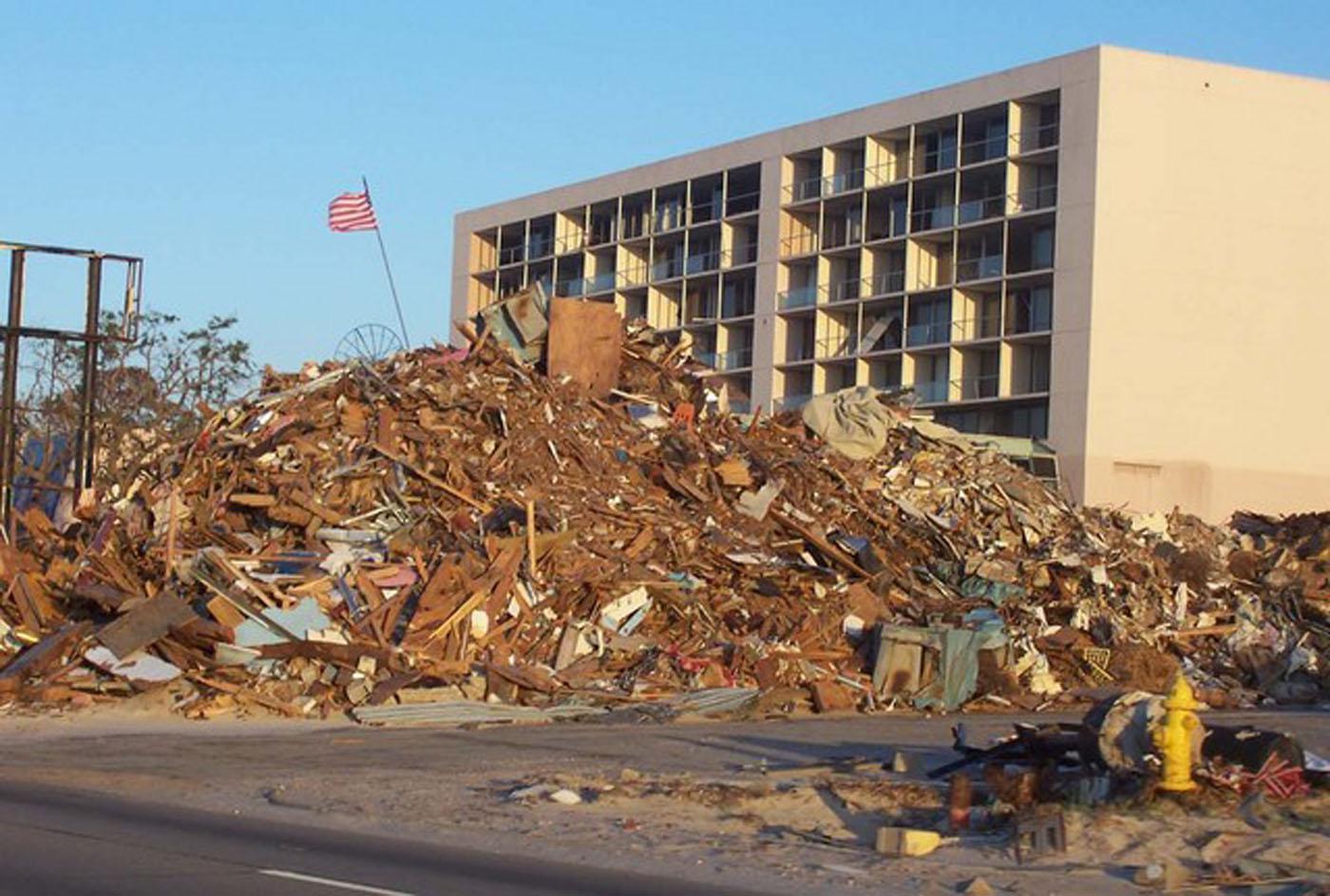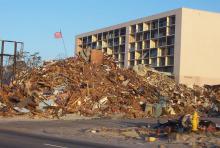Information Possibly Outdated
The information presented on this page was originally released on December 1, 2005. It may not be outdated, but please search our site for more current information. If you plan to quote or reference this information in a publication, please check with the Extension specialist or author before proceeding.
Katrina debris doubled state's annual collections
MISSISSIPPI STATE -- Three months after Hurricane Katrina created one and a half times as much debris in Mississippi's three coastal counties as the state creates in a year, removal is progressing slowly under a plan that emphasizes long-term safe disposal.
Mark Williams, administrator of the Solid Waste Policy, Planning and Grants Branch of the Mississippi Department of Environmental Quality, said the U.S. Army Corps of Engineers estimates the hurricane created 39 million cubic yards of debris. About 25 million cubic yards of the debris exists in Hancock, Harrison and Jackson counties.
Mississippi measures landfill debris in tonnage, not volume, so the 39 million cubic yards translates to about 10 million tons of debris, with 6.25 million tons along the Gulf Coast. In 2004, the entire state of Mississippi disposed of about 4 million tons of solid waste in state landfills, excluding that generated by major industries, which manage their own landfill needs.
Larry Oldham, soil specialist with the Mississippi State University Extension Service, said a major concern with any landfill is the water that percolates through the debris, carrying away organic and inorganic substances.
“Some liquids would create serious pollution problems if allowed to reach the water supply,” Oldham said.
Landfill gas, a mix of methane and carbon dioxide, often is created as debris decomposes, and unchecked, can pose a threat to the environment. Oldham said vents or a gas collection system must be in place to prevent this problem.
Oldham said landfill sites are carefully selected using a variety of criteria and following strict standards to make as minimal an impact on the environment as possible. Those selected to collect storm debris are no different.
Mike Cox, professor of environmental soil management with the Mississippi Agricultural and Forestry Experiment Station, said there are two types of landfills.
“The natural attenuation landfill is designed to collect material and allow liquids to pass through. It uses the soil as a purifying agent for the liquids, making them safe to enter the water supply,” Cox said. “The other type is a containment, or secure, landfill. These have a layer that prevents liquids from percolating into the soil.”
Williams said that soon after Hurricane Katrina passed through the state, MDEQ asked local governments to identify solid waste disposal needs from the storm, consider existing landfills that might be used for storm debris disposal and identify emergency landfill sites that would be needed to provide adequate disposal capacity.
“We initially tried to evaluate existing disposal sites that were used for landfilling limited types of wastes to determine if such sites could be upgraded to safely dispose of the hurricane debris,” Williams said. “We found a number of facilities that were able to be upgraded in each of the three coastal counties.”
MDEQ is working with local governments, the Corps of Engineers and other debris management contractors to reduce the amount of clean vegetative debris being taken to landfills.
“Along the coast, about one-third of the overall debris is vegetative, and inland it is close to 85 percent,” Williams said. “We're attempting to manage that a little differently, and we're allowing some burning and grinding of the clean vegetative debris for volume reduction. Much of the ground vegetative debris can be used as mulch, fuel or for certain agricultural purposes.”
The rest of the debris is a mixture of structural and building components along with the contents of private residences and commercial businesses. This waste is segregated to remove vegetation, appliances, electronics, household hazardous wastes, garbage and other types of debris that can be recycled or managed separately. The remaining structural debris is taken to appropriate landfills nearby.
As of the end of November, Williams estimated debris removal was about 50 percent complete statewide, and about 35 percent to 40 percent complete on the coast.
“Three months later, we've still got quite a bit of debris remaining. In addition, another significant challenge in the cleanup is the many damaged buildings left that still have to be demolished and the resulting debris disposed of,” Williams said.
Another problem is storm debris that was washed into the coastal waterways. Williams said the U.S. Coast Guard estimates there are 1.5 million to 2 million cubic yards of debris in the water, which they are working to remove and dispose of.
Once storm debris is removed from damaged areas and coastal communities continue to rebuild, they are expected to generate reconstruction waste at higher than normal rates. MDEQ is working with local governments and state and federal agencies to provide additional disposal capacity and recycling capabilities for this waste.





